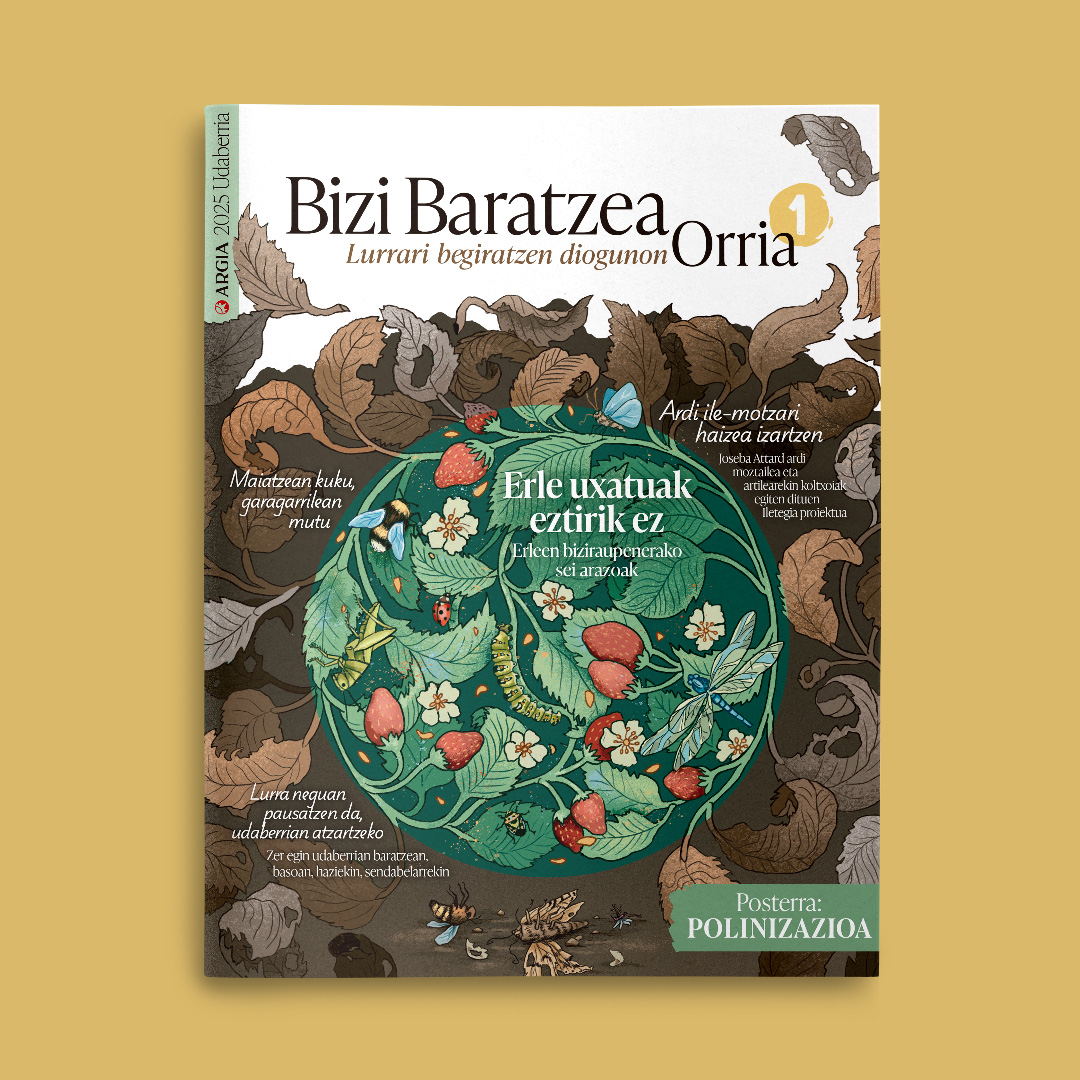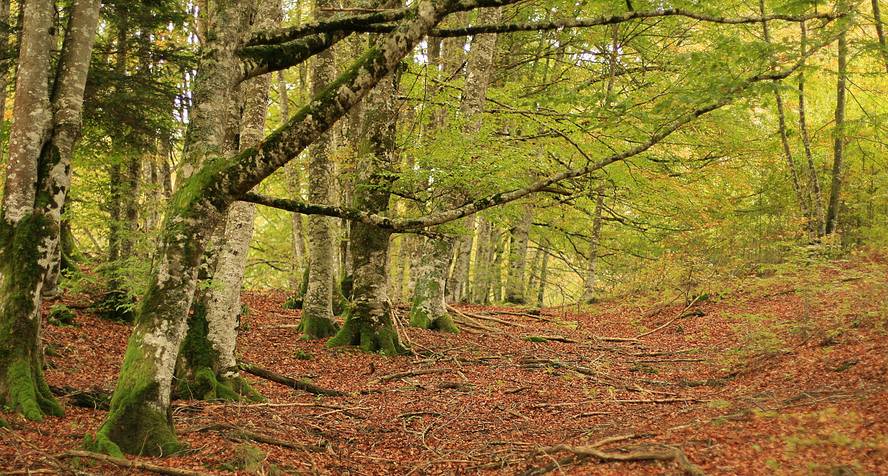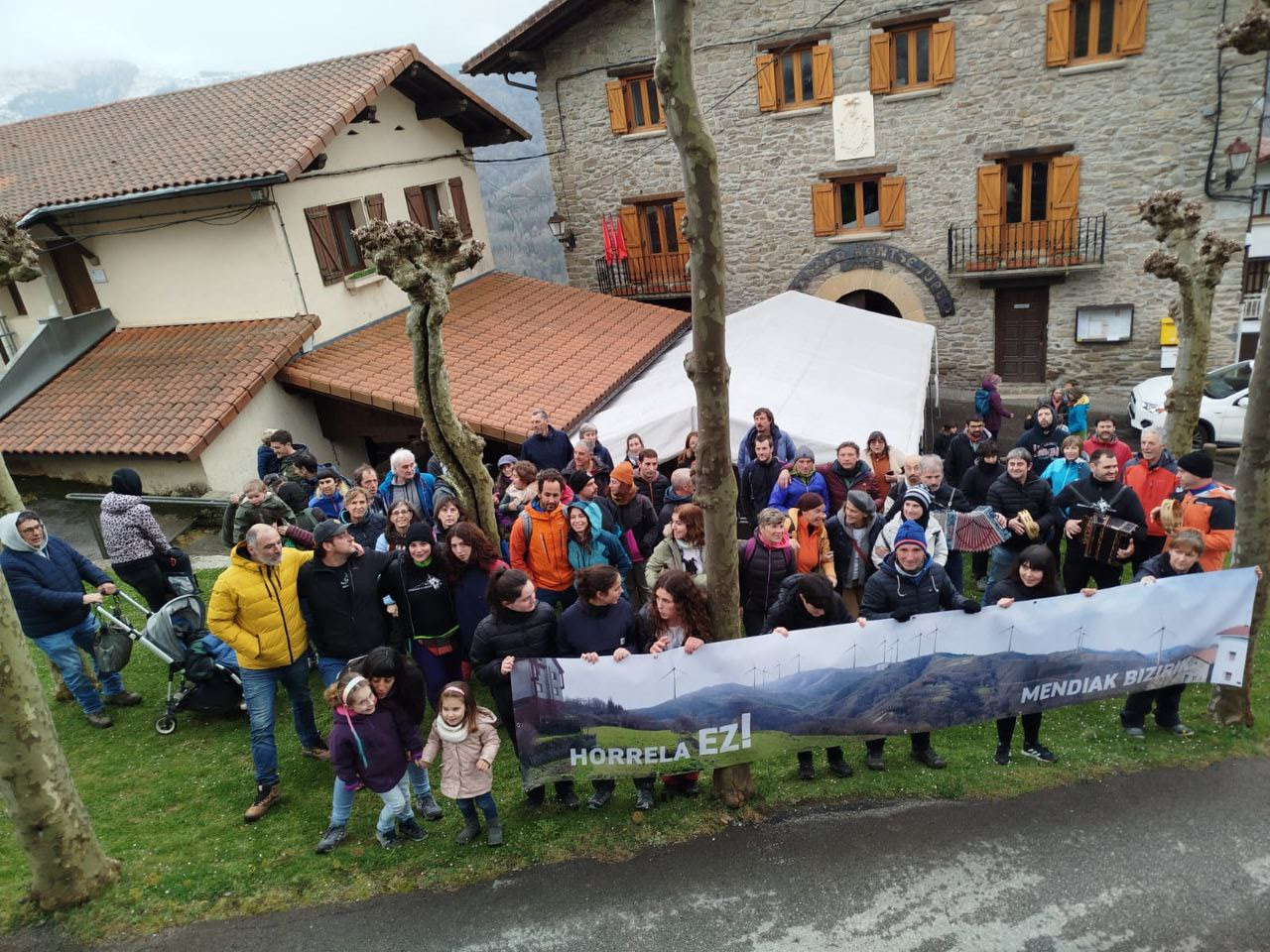“If you take a good look at any environmental problem, you’ll find yourself with the money”
- “To see if writing softens the negative melody, the pandemic causes quite headaches,” asks Kistiñe García Cantero (Bilbao, 1977). Garcia, who studied Environmental Sciences, has been working for twenty years in the Ekologistak Martxan group, for the last seven years in the campaign against hormonal contaminants in the Spanish state. The truth is, even if I try, it's not easy to make up.

What are hormonal contaminants?These are
substances produced by humans, which adversely affect the health of an organism or its descendants, because they produce changes in the endocrine function, which includes natural substances that affect the hormonal system, of which we do not care. The hormonal system is hacked, so to speak, it's the communication system that we have inside and it's very important to send the right information at the right time. If you put this upside down ...
What are the consequences of this?
Scientists who have researched the subject in recent decades have perceived multiple influences. The most severe, before birth, even in the maternal uterus, that children may suffer [see left box]: malformations may occur, or effects that are not perceived in newborns but that will later affect their IQ. There are in-depth studies that say this: children's IQ is declining at Community level because of endocrine pollutants. Another consequence is loss of fertility: The number of sperm from Western men has halved in 40 years. And there's more. For example, obesity, some types of cancer... There are many hormonal contaminants that cause multiple damage. That is why it is very difficult to scientifically demonstrate this effect and, ultimately, to provide a definition of these pollutants. The detection of these types of pollutants is not easy.
It says there are many. Can an amount be said?
No, you can't give an amount.
Tens, hundreds, thousands?
Between hundreds and thousands. You can't specify. From a legislative point of view, it took years for endocrine pollutants to be defined, which is not yet clear at the legislative level. We want the treatment to be similar to that of carcinogens.
I mean, legal treatment?
Yeah, that's where everything else comes from. First, scientists have to convince politicians, then politicians have to legislate and, finally, the law has to be enforced, at least theoretically. But the field of hormonal pollutants is very complex, and that is what the manufacturers take advantage of to regulate these substances and therefore reduce them to make it difficult.
Let me see if I have understood it correctly. Is a substance not banned or drastically reduced as soon as it has been determined to be a hormone pollutant?
Umm, yes [doubtful], but very little progress has been made in terms of timing legislativa.De, only in terms of pesticides has it been determined what an endocrine contaminant is. In this way, if it was demonstrated that one of them is a hormone pollutant for humans, it could not be marketed. But it is very difficult to ban a pesticide for that reason. It is very difficult for the European administration to recognise that a particular pesticide is an endocrine pollutant. There is a huge amount of scientific evidence to be presented.
What about pesticides? There is no
single regulation in Europe that includes pesticides, plastics, cosmetics... and decisions are made on the substance. For example, A is still spinning with bisphenol. It was considered a hormone contaminant for humans and since 2009 its use in the manufacture of baby bottle teats has been banned, but it is still present in many products. In 2015, the European Food Safety Agency said it is not so harmful and authorised a percentage of food packaging. But recently, all of a sudden, they decided that the maximum permissible percentage is 100,000 times lower than the previous one. And until then, what?
Why are the administrations not protecting us from this?
Because there's money in the middle. It's done. If you take a good look at any environmental problem, you'll find the money. There are companies that make huge amounts of money and we have them face to face. It's the battle between David and Goliath. On the other hand, each can take steps to minimise exposure to these substances. Eat pesticide-free food, reduce plastic... But I find it shameful that people have to worry about knowing whether there are hormonal pollutants in all the products we use; there are people who say that they have to prevent these substances from reaching us.
Food dishes, cosmetics, bottles, pesticides... Are there hormonal contaminants everywhere?
Yes. Among others, in any plastic. And I can also tell you that all of us, more or less, have those things in the body. Look, they won't suddenly die, they don't produce acute toxicity, but they slowly damage our health.
am now pregnant and, in fact, hormonal contaminants have the highest risk for embryos and children. According to the latest studies, the impact can reach the grandchildren, it's terrible. When developing in the uterus, the creation of an organ or another, the appearance or permanence of the testicles on the outside of the body... depends on a quantity of hormone coming at the right time, each week of pregnancy is subject to a certain hormonal flow. And if the child’s body is exposed to substances that he himself considers hormones but which are in fact contaminants, damage can occur.”
PP, Vox, Junts eta EAJren botoekin Espainiako Kongresuak onartu du otsoa espezie babestuen zerrendatik ateratzea eta, horren ondorioz, berriz ehizatu ahal izango dute Duero ibaitik iparrera.
Dakota Access oliobidearen kontrako protestengatik zigortu du Ipar Dakotako epaimahai batek erakunde ekologista, Energy Transfer Partners enpresak salaketa jarri ostean. Standing Rockeko sioux tribuak protesten erantzukizuna bere gain hartu du.
Sareak nabarmendu du Euskal Herri osoko eragileak daudela bertan eta deialdiak 140tik gora atxikimendu jaso dituela: "Horrek islatzen du zein den gaur egungo errealitatearen urgentzia, lurraren defentsaren beharra eta auziarekiko dagoen konpromezua".
Koalizio abertzaleko hiru ordezkariek ohar baten bidez euren "frustrazioa" adierazi dute proiektu fotovoltaikoa ezin gelditzeagatik: "Egoera horren aurrean, ez gara legegintzaldia amaitzeko indarrez sentitzen". Proiektu honi ez! plataformak salatu du EH Bilduren... [+]
Arratzua-Ubarrundiako "Proiektu honi ez!" plataformak adierazpen hau kaleratu du, udalerri horretako EH Bilduko hiru zinegotziek dimisioa aurkeztu berritan. Izenburu hau darama testuak: "EH Bilduren moketako politika edo Iparra nola galdu".
Arratzua-Ubarrundia (Araba) herriko EH Bilduko hiru zinegotziek dimisioa eman dute Solariaren zentral fotovoltaikoagatik. Hau da hiru zinegotziek, Txetxu Zengotitabengoak, Laura Sanchok eta Javier Ruiz de Arkautek, herritarrei zuzendu dieten agur mezua.
Urtaro bakoitzean kaleratuko den aldizkari honek Lurrari buruzko jakintza praktikoa eta gaurkotasuneko gaiak jorratuko ditu. Formato oso berezia du: plegatutako orri handi bat da eta zabaldu ahala poster handi bat agertuko zaigu barnean. ARGIAk sostengatzen du Bizi Baratzea... [+]
Mila milioika mintzo dira agintariak. CO2 isurketak konpentsatzeko neurri eraginkor gisa aurkeztuta, zuhaitz landaketei buruzko zifra alimaleak entzuten dira azken urteetan. Trantsiziorako bide interesgarria izan zitekeen, orain arteko oihanak zainduta eta bioaniztasuna... [+]
Eusko Jaurlaritzak eta Arabako Foru Aldundiak Datu Zentroen instalazioei ateak irekitzen dizkiete horiek arautzeko legedia sortu aurretik. Bilbao-Arasur Dantu Zentroarekin, bere lehen fasea gauzatuta, eta instalatzea amesten duen Solariaren Datu Zentroarekin, 110.000 m2... [+]
Otero jauna, garai honetan artzain honek ez du tarte handirik izaten ezertarako, justuan ibiltzen naiz, baina gaurkoan ezin utzi erantzun gabe zure azken kolaborazioa. Izan ere, sortu didan egonezinak pisua du. Haserrea ere astuna egiten zait. Ez pentsatu, ordea, dela zenbait... [+]
Kutsatzaile kimiko toxikoak hauteman dituzte Iratiko oihaneko liken eta goroldioetan. Ikerketan ondorioztatu dute kutsatzaile horietako batzuk inguruko hiriguneetatik iristen direla, beste batzuk nekazaritzan egiten diren erreketetatik, eta, azkenik, beste batzuk duela zenbait... [+]
Martxoak 15 goizean elurrak zuritu zuen Arano. Bertako herritarrek eta ingurutik eta ez hain ingurutik bildutakoek bete zuten plaza eta elkartasunaren beroan gozatu zuten eguna: Urumeako mendietan ezarri nahi duten Euskal Herriko zentral eoliko handienaren kontrako protesta izan... [+]




















